HOW TO WRITE A GOOD COVER LETTER: OUR TIPS FOR SUCCESS
You’ve spent time and energy polishing your resume to perfection. Ready to roll? Not quite! Most applications require a cover letter, too. Write a good one to accompany your resume and you’ll increase your chances of getting a foot in the door. Where do you start, though? What should you include?
Here’s how to write a good cover letter: our tips for success.
1. Follow application requirements
Read the job advertisement, job description and any application details in full before you start. Requirements vary from one company to another, and one role to another. A generic one-size-fits-all approach rarely works. So, make a note of what you need to provide. Hiring managers are unlikely to give your application a second glance otherwise.
2. Letter length
Before you start, think about length. A 1-2 page letter is sufficient for most jobs; any more than this and you risk overwhelming your hiring manager. Check the application details, though, as requirements may vary.
3. Personalise your greeting
Try to find the name and title of the hiring manager so you can address them directly in your letter, e.g. “Dear Jane Smith.” Sometimes, this is easier said than done. If you can’t locate accurate information, the following is acceptable: “Dear Hiring Manager.” You could customise your greeting by specifying a department, e.g., “Dear Customer Service Hiring Manager.” Also include the company name and address at the top of the letter.
4. Focus on the format
Ideally, keep style and formatting similar to your resume for consistent, sleek presentation. Readable fonts like Calibri or Arial work best, with a font size of 11-12 pt. And use a similar header to your resume, too. This should include your name, email and contact telephone number.
Break your text into paragraphs, so your content is in easily readable chunks.
5. Reference the job title/number
Towards the top of your letter, either under the header or under the greeting, reference the job title and number.
6. Opening paragraph
- Mention where you found out about the role.
E.g., “I would like to apply for the role of Customer Service Manager currently advertised on SEEK.”
- Explain – in a nutshell – what you are doing now and why you want to apply.
E.g., “I have been working as a Customer Service Officer for the last five years and am ready to step up to a role with more responsibility and potential for growth.”
7. Body of cover letter
This is where you show that you really have read the job description and other relevant information in more detail. Every role has different requirements and “desirables.” In the body of your cover letter, you want to show that you are the right fit for the role. For example, if the role requires someone who is experienced in conflict management, demonstrate your knowledge and experience in this area.
E.g., “I am the go-to person in my team for customers who are upset or angry. I always stay calm, listen carefully to their complaints and reassure them that I will find a solution. If I am unable to resolve the issue by myself, I coordinate with the relevant department or escalate to management.”
A similar approach can be used to address all the role requirements. And don’t worry if you don’t meet every single “must have” or “would like” on the list. But do reassure the hiring manager that you are ready and willing to learn new skills.
E.g., “I do not currently have experience of working with Zendesk but am willing to undertake training to get up to speed.”
8. Explain why you want the job
In your last main paragraph, tell the hiring manager what attracted you to the role and company. Perhaps it is the potential for growth that you mentioned at the top of your letter. Or maybe the company is renowned for being a leader in customer service. If you check out their website and social media, you may find some more tips to help you write this section.
E.g., “I have aspired to work for [Company] since high school. You have an unrivalled reputation in Australia for providing exceptional customer service. I would welcome the opportunity to gain experience with your team and contribute to your success.”
9. Be confident, engaging and proactive
Aim for a confident, engaging tone throughout your letter. You know you have the skills and experience so sell them! End your letter by assuming that you are going through to the next round.
E.g., “I look forward to discussing my fit for the role with you at interview.”
10. Sign off
Thank the hiring manager for their time. After all, they’ve hopefully read your cover letter and resume from start to finish
E.g., “Thank you for taking the time to consider my application.”
Then sign off with a standard formula like “Best wishes” or “Kind regards” and your full name.
Writing a good cover letter takes time and energy – just like writing a resume. You may find it daunting to draft 1-2 pages that really highlight your fit for the role. With research, reflection and planning, however, you’ll soon be underway. And you’ll find that you can reuse some of your content in future cover letters, too.
The team at Optimal Recruitment always appreciate a well-crafted cover letter! Contact us today on info@optimalrecruitment.com.au or 02 8416 4181 to discuss your job search.










